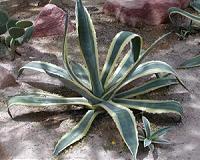 |
Rochester NY (SPX) Feb 24, 2011 Researchers at Rochester Institute of Technology are developing biodiesel from microalgae grown in wastewater. The project is doubly "green" because algae consume nitrates and phosphates and reduce bacteria and toxins in the water. The end result: clean wastewater and stock for a promising biofuel. The purified wastewater can be channeled back into receiving bodies of water at treatment plants, while the biodiesel can fuel buses, construction vehicles and farm equipment. Algae could replace diesel's telltale black puffs of exhaust with cleaner emissions low in the sulfur and particulates that accompany fossil fuels. Algae have a lot of advantages. They are cheaper and faster to grow than corn, which requires nutrient-rich soil, fertilizer and insecticide. Factor in the fuel used to harvest and transport corn and ethanol starts to look complicated. In contrast, algae are much simpler organisms. They use photosynthesis to convert sunlight into energy. They need only water-ponds or tanks to grow in-sunlight and carbon dioxide. "Algae-as a renewable feedstock-grow a lot quicker than crops of corn or soybeans," says Eric Lannan, who is working on his master's degree in mechanical engineering at RIT. "We can start a new batch of algae about every seven days. It's a more continuous source that could offset 50 percent of our total gas use for equipment that uses diesel." Cold weather is an issue for biodiesel fuels. "The one big drawback is that biodiesel does freeze at a higher temperature," says Jeff Lodge, associate professor of biological sciences at RIT. "It doesn't matter what kind of diesel fuel you have, if it gets too cold, the engine's not starting. It gels up. It's possible to blend various types of biodiesel-algae derived with soybeans or some other type-to generate a biodiesel with a more favorable pour point that flows easily." Lannan's graduate research in biofuels led him to Lodge's biology lab. With the help of chemistry major Emily Young, they isolated and extracted valuable fats, or lipids, algae produce and yielded tiny amounts of a golden-colored biodiesel. They are growing the alga strain Scenedesmus, a single-cell organism, using wastewater from the Frank E. Van Lare Wastewater Treatment Plant in Irondequoit, N.Y. "It's key to what we're doing here," Lodge says. "Algae will take out all the ammonia-99 percent-88 percent of the nitrate and 99 percent of the phosphate from the wastewater - all those nutrients you worry about dumping into the receiving water. In three to five days, pathogens are gone. We've got data to show that the coliform counts are dramatically reduced below the level that's allowed to go out into Lake Ontario." Assemblyman Joseph Morelle, whose district includes Irondequoit, applauds RIT's initiative. "Innovations developed at great academic institutions such as RIT will be key to solving many of the challenges we face, from revitalizing the upstate economy to the creation of clean, renewable energy sources for the future. Professor Lodge and Eric Lannan's research bridges the gap between cost efficiency and environmental conservation and is a perfect example of how old problems can yield to new and creative solutions." Lodge and Lannan ramped up their algae production from 30 gallons of wastewater in a lab at RIT to 100 gallons in a 4-foot-by-7-foot long tank at Environmental Energy Technologies, an RIT spinoff. Lannan's graduate thesis advisor Ali Ogut, professor of mechanical engineering, is the company's president and CTO. In the spring, the researchers will build a mobile greenhouse at the Irondequoit wastewater treatment plant and scale up production to as much as 1,000 gallons of wastewater. Northern Biodiesel, located in Wayne County, will purify the lipids from the algae and convert them into biodiesel for the RIT researchers.
Share This Article With Planet Earth
Related Links RIT Bio Fuel Technology and Application News
 Agave Has Tremendous Potential As New Bioenergy Feedstock
Agave Has Tremendous Potential As New Bioenergy FeedstockChampaign, IL (SPX) Feb 23, 2011 An article in the current issue of Global Change Biology Bioenergy reviews the suitability of Agave as a bioenergy feedstock that can sustain high productivity in spite of poor soil and stressful climatic conditions accompanying climate change. Agave, which grows successfully under hot, dry conditions, is currently used in the production of beverages, food, and fiber, and has only recently ... read more |
|
| The content herein, unless otherwise known to be public domain, are Copyright 1995-2010 - SpaceDaily. AFP and UPI Wire Stories are copyright Agence France-Presse and United Press International. ESA Portal Reports are copyright European Space Agency. All NASA sourced material is public domain. Additional copyrights may apply in whole or part to other bona fide parties. Advertising does not imply endorsement,agreement or approval of any opinions, statements or information provided by SpaceDaily on any Web page published or hosted by SpaceDaily. Privacy Statement |